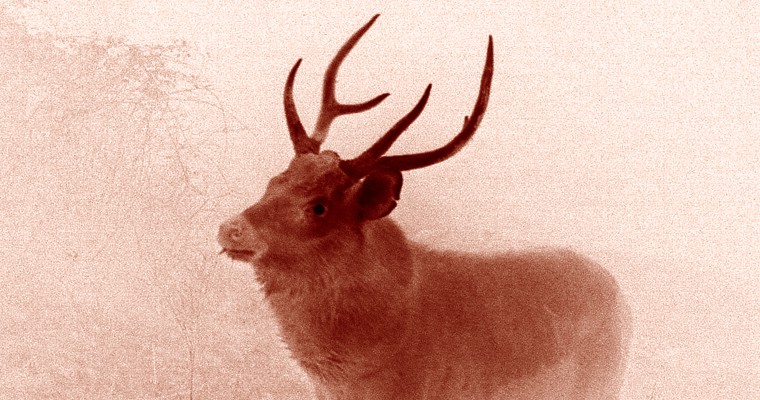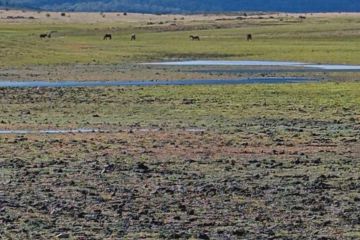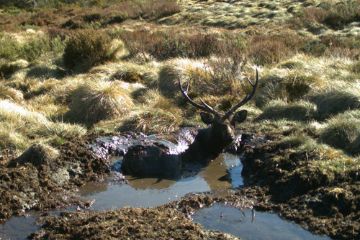Guest blog by Linden Gillbank, School of Historical and Philosophical Studies, University of Melbourne.
A shocking discovery was made at the end of 2011. A whiskery-leaved yellow daisy was found flourishing on Victoria’s Bogong High Plains. These grasslands are rich in yellow daisies, indigenous and alien, but this daisy spells danger – ecological havoc. It is the European mouse-ear hawkweed, one of the most troublesome invasive weeds in New Zealand’s alpine grasslands and elsewhere.

Hawkweeds are incredibly successful invaders. These hardy perennials tolerate a huge range of conditions including snow and poor soils. They are very fecund, with summer thistle-down seeds borne far on winds, animals and vehicles and winter-tolerant stolons converting individual plants into dense mat-like colonies. And they indulge in underground chemical warfare, secreting chemicals that deter the roots of other plants. Their ecological devastation is horribly evident around the world. In New Zealand, mouse-ear hawkweed has completely displaced extensive areas of alpine tussock grasslands in the South Island.
Because of their potential to cause significant economic and ecological damage, hawkweeds were to be kept out of Australia. Under the Quarantine Act 1908 Hieracium pilosella (mouse-ear hawkweed) was prohibited entry into Australia before the 1996 review of Quarantine in Australia. The plant quarantine leaflet, Hawkweeds, published that year for the Australian Quarantine and Inspection Service (AQIS), described hawkweeds’ robust reproductive capacities and widespread distribution far from their native habitats, and warned of their invasive weediness. One of the species prohibited entry into Australia in 1998 was Hieracium aurantiacum (orange hawkweed) long noticed growing wild, ie naturalised, in Tasmania and about to be recognised in Victoria.
In January 1999 roadside clumps of bright orange daisies in Falls Creek ski village puzzled university botanists who knew that there are no local indigenous daisies of that colour. Identified as Hieracium aurantiacum, they were soon found on the Bogong High Plains in the Alpine National Park above Falls Creek and elsewhere in Victoria’s high country, and also across the border in Kosciuszko National Park. Orange hawkweed was one of 28 biodiversity-threatening plants on the Australian Government’s 2001 Alert list for environmental weeds.

By 2003, all species of Hieracium were listed or declared under various State Acts – in New South Wales and Western Australia before any hawkweed incursions were recorded, and in Tasmania and Victoria when orange hawkweed was a known invader. They were declared Class 1 noxious weeds under the New South Wales Noxious Weeds Act 1993 in August 1999; and in April 2003 they were added to the prohibited list in Western Australia, where there are still no known incursions. In 2001 they were declared under Tasmania’s Weed Management Act 1999; and in May 2003 they were gazetted State prohibited weeds under Victoria’s Catchment and Land Protection Act 1994. Despite recent savage departmental staff cuts, Victoria’s Department of Environment and Primary Industries (DEPI) remains responsible for freeing Victoria of hawkweeds – ie eradicating them in the Alpine Resorts and National Park.
The summer after hawkweeds’ Victorian gazettal, a second species was discovered naturalised on the Bogong High Plains. In December 2003, an extensive population of the yellow-daisied king devil hawkweed Hieracium praealtum was spotted camouflaged in a sea of yellow daisies near Rocky Valley Storage Dam. Many summers after its unnoticed arrival and five years after its AQIS listing, this was its first recorded sighting in Australia. Other incursions have since been found on the Bogong High Plains, but not elsewhere in Australia.

The shocking discovery of Victoria’s third naturalised hawkweed was made during a hawkweed survey on the Bogong High Plains in the last week of 2011. A volunteer noticed a dense mat of distinctive whiskery leaves with a lemony-yellow daisy during an off-duty ramble beyond hawkweeds’ known range. It was the dreaded mouse-ear hawkweed. Other incursions have since been found in the vicinity, and some may be hybrids. Incursions discovered earlier in Tasmania and the ACT have since been eradicated. But is mouse-ear hawkweed still a species of Hieracium?
While hawkweed incursions were being found in Australia, hawkweed taxonomy was being changed in Europe. The generic name Hieracium is derived from hawkweed’s ancient Greek name ‘hieracion’ from ‘hierax’ (hawk) in the belief that hawkweed sap improved hawk eyesight. In 2007 two taxonomists reclassified a group of Hieracium species into the genus Pilosella. So now mouse-ear hawkweed is Pilosella officinarum, king devil hawkweed is Pilosella piloselloides, and orange hawkweed is Pilosella aurantiaca. Already used in New Zealand and North America, these names will soon appear in Australian books and brochures. Only their common names will continue to echo hawkweeds’ ancient, possibly apocryphal, links with hawks.
As you marvel at the summer floral brilliance of Australia’s high plains grasslands, look out for the orange and yellow daisies and whiskery leaves of hawkweeds. But do not touch these ecosystem-invaders. Their removal requires extreme care – to be undertaken only by trained hawkweed-workers. No seed, stem or stolon must escape. If you see plants that you think are hawkweeds, send their exact positions and photos to DEPI or Parks Victoria staff or their equivalents in other states. Use your mobile phone to dob in an eco-terrorist.
More Information
Department of Primary Industries, Victoria. 2012. Hawkweed Hieracium species.
Gillbank L. 2012. Another hawkweed found in the Alpine National Park. Park Watch 249: 18-19.
Williams NSG, Holland KD. 2007. The ecology and invasion history of hawkweeds (Hieracium species) in Australia. Plant Protection Quarterly 22(2): 76-80.




